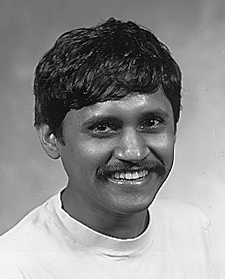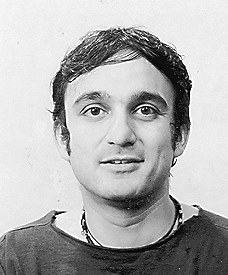Abstract:
Modulation strategies for multilevel inverters have typically focused on synthesizing a desired set of three phase sinusoidal voltage waveforms using a fixed number of DC...Show MoreMetadata
Abstract:
Modulation strategies for multilevel inverters have typically focused on synthesizing a desired set of three phase sinusoidal voltage waveforms using a fixed number of DC voltage levels. This results in the average current injection and hence the net power drawn from the multiple DC bus terminals to be unmatched and time varying. Subsequently, the DC-bus voltages are unregulated, requiring corrective control action to incorporated. In this paper, the principle of reciprocity transposition in introduced as a means for modeling the DC-bus current injection simultaneously as the modulation strategy is formulated. Furthermore, a new sinusoidal pulsewidth-modulation strategy that features constant and controllable current injection at the DC-bus terminals while maintaining output voltage waveform quality is introduced. The proposed strategy is general enough to be applied to converters with an even number of levels and an odd number of levels. Analytical results comparing the performance of the proposed modulator with a conventional multiple carrier modulator are presented for example multilevel converters with four and five levels. Computer simulation results verifying the analytical results are presented for a four-level converter.
Published in: IEEE Transactions on Industrial Electronics ( Volume: 49, Issue: 5, October 2002)

Department of Electrical and Computer Engineering, University of Wisconsin, Madison, WI, USA
Giri Venkataramanan (S'86–M'93) studied electrical engineering at the Government College of Technology, Coimbatore, India, California Institute of Technology, Pasadena, and the University of Wisconsin, Madison.
After teaching electrical engineering at Montana State University, Bozeman, he returned to the University of Wisconsin, Madison, as a faculty member in 1999, where he continues to direct research in various areas of...Show More
Giri Venkataramanan (S'86–M'93) studied electrical engineering at the Government College of Technology, Coimbatore, India, California Institute of Technology, Pasadena, and the University of Wisconsin, Madison.
After teaching electrical engineering at Montana State University, Bozeman, he returned to the University of Wisconsin, Madison, as a faculty member in 1999, where he continues to direct research in various areas of...View more

Department of Electrical and Computer Engineering, University of Wisconsin, Madison, WI, USA
Ashish Bendre received the B.Tech. degree in electrical engineering in 1990 from Indian Institute of Technology, Bombay, India, and the M.S.E.E. degree in 1992 from the University of Wisconsin, Madison, where he is currently working toward the Ph.D. degree in electrical engineering.
His primary areas of interest are multilevel converters and dc–dc converters. He has more than seven years of design and product development e...Show More
Ashish Bendre received the B.Tech. degree in electrical engineering in 1990 from Indian Institute of Technology, Bombay, India, and the M.S.E.E. degree in 1992 from the University of Wisconsin, Madison, where he is currently working toward the Ph.D. degree in electrical engineering.
His primary areas of interest are multilevel converters and dc–dc converters. He has more than seven years of design and product development e...View more

Department of Electrical and Computer Engineering, University of Wisconsin, Madison, WI, USA
Giri Venkataramanan (S'86–M'93) studied electrical engineering at the Government College of Technology, Coimbatore, India, California Institute of Technology, Pasadena, and the University of Wisconsin, Madison.
After teaching electrical engineering at Montana State University, Bozeman, he returned to the University of Wisconsin, Madison, as a faculty member in 1999, where he continues to direct research in various areas of electronic power conversion as an Associate Director of the Wisconsin Electric Machines and Power Electronics Consortium (WEMPEC). He is the holder of four U.S. patents and has authored a number of published technical papers.
Giri Venkataramanan (S'86–M'93) studied electrical engineering at the Government College of Technology, Coimbatore, India, California Institute of Technology, Pasadena, and the University of Wisconsin, Madison.
After teaching electrical engineering at Montana State University, Bozeman, he returned to the University of Wisconsin, Madison, as a faculty member in 1999, where he continues to direct research in various areas of electronic power conversion as an Associate Director of the Wisconsin Electric Machines and Power Electronics Consortium (WEMPEC). He is the holder of four U.S. patents and has authored a number of published technical papers.View more

Department of Electrical and Computer Engineering, University of Wisconsin, Madison, WI, USA
Ashish Bendre received the B.Tech. degree in electrical engineering in 1990 from Indian Institute of Technology, Bombay, India, and the M.S.E.E. degree in 1992 from the University of Wisconsin, Madison, where he is currently working toward the Ph.D. degree in electrical engineering.
His primary areas of interest are multilevel converters and dc–dc converters. He has more than seven years of design and product development experience in industry, primarily at Pillar Technologies and Soft Switching Technologies.
Ashish Bendre received the B.Tech. degree in electrical engineering in 1990 from Indian Institute of Technology, Bombay, India, and the M.S.E.E. degree in 1992 from the University of Wisconsin, Madison, where he is currently working toward the Ph.D. degree in electrical engineering.
His primary areas of interest are multilevel converters and dc–dc converters. He has more than seven years of design and product development experience in industry, primarily at Pillar Technologies and Soft Switching Technologies.View more


